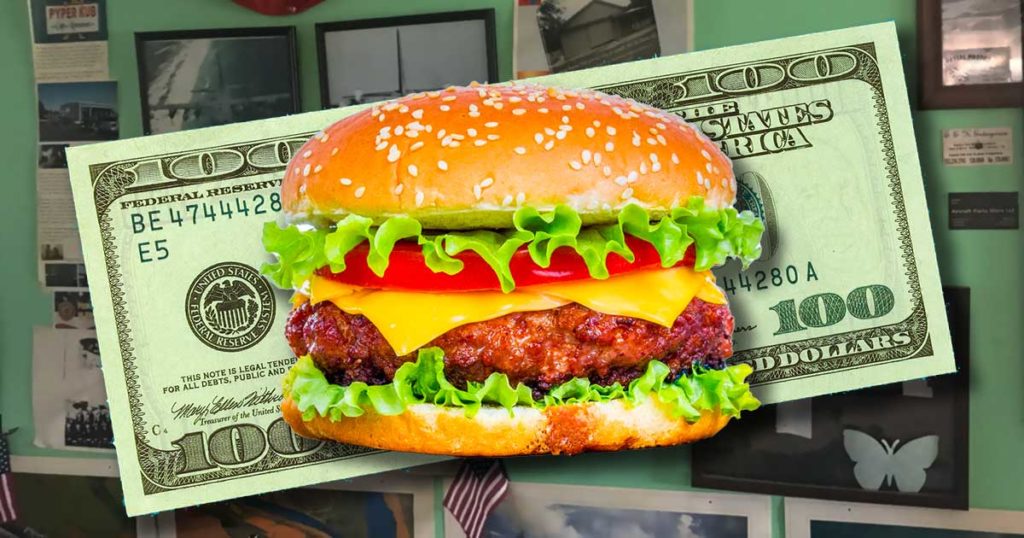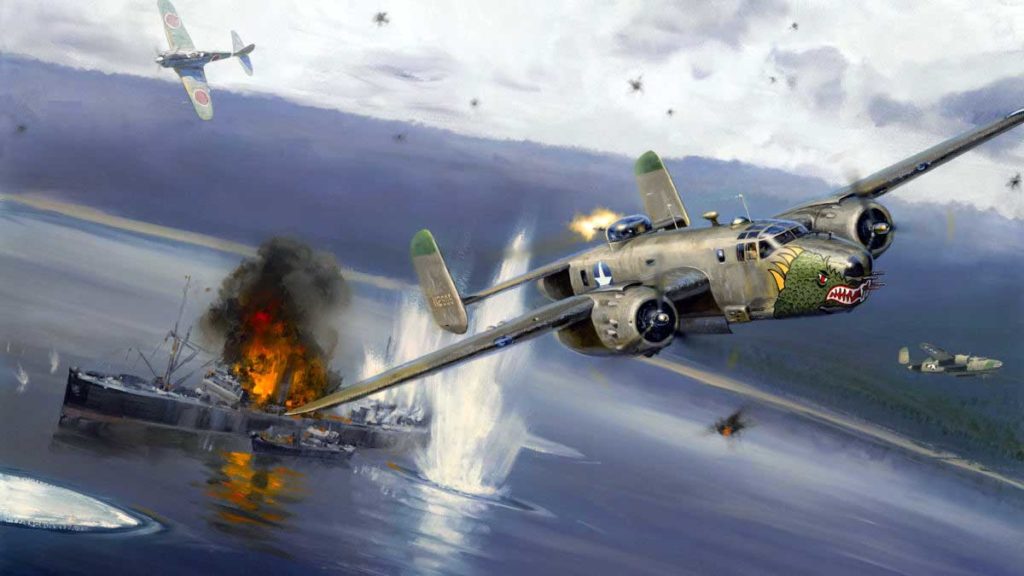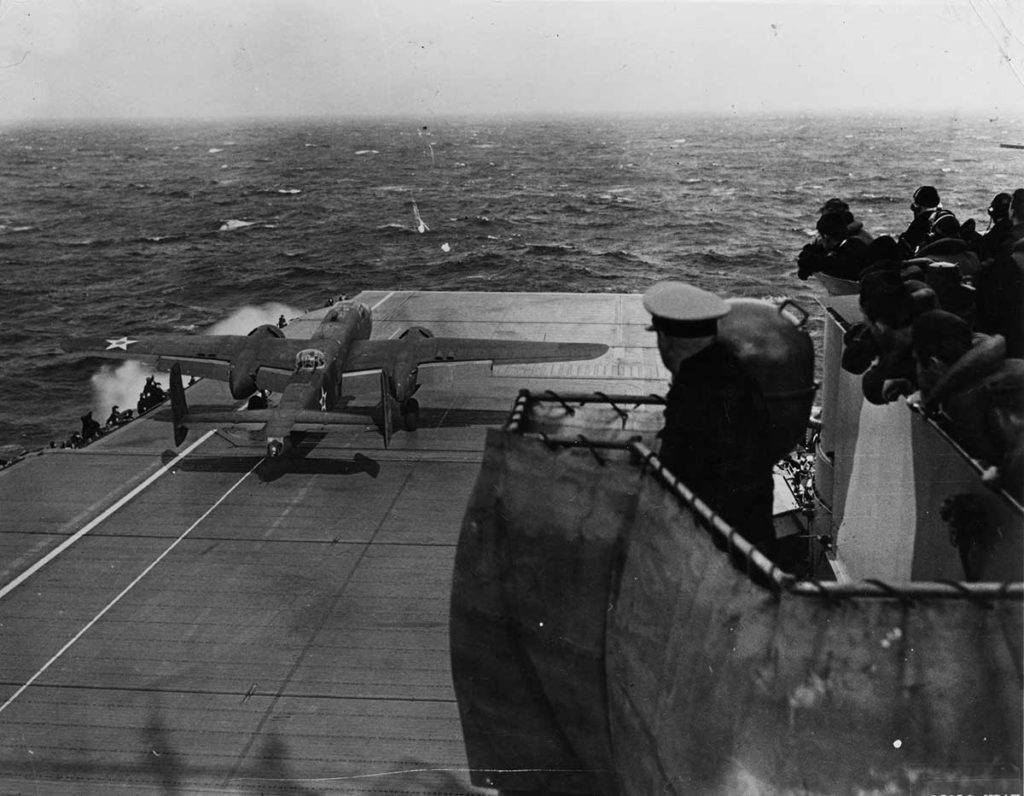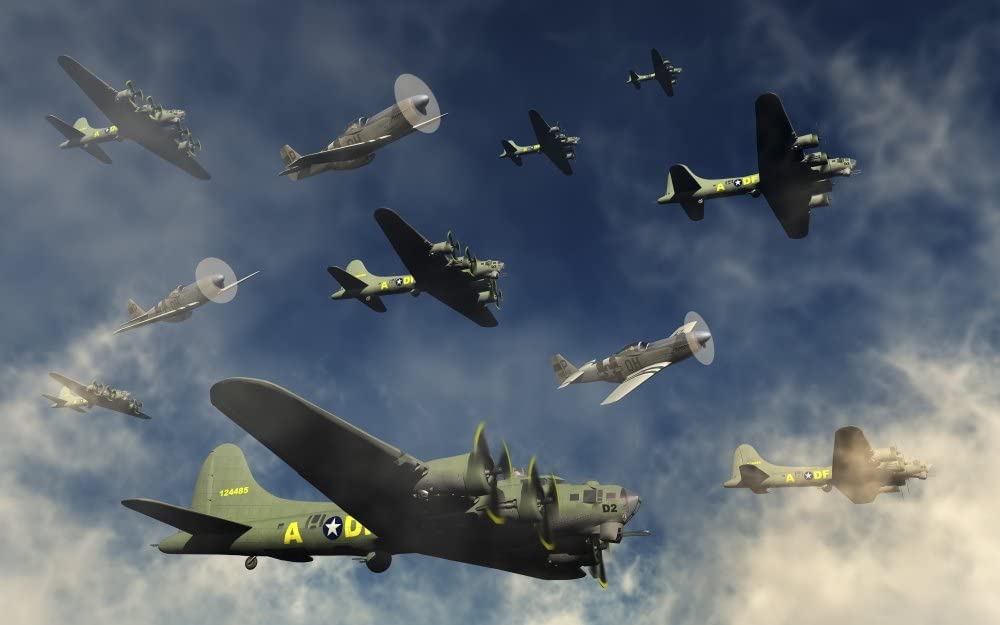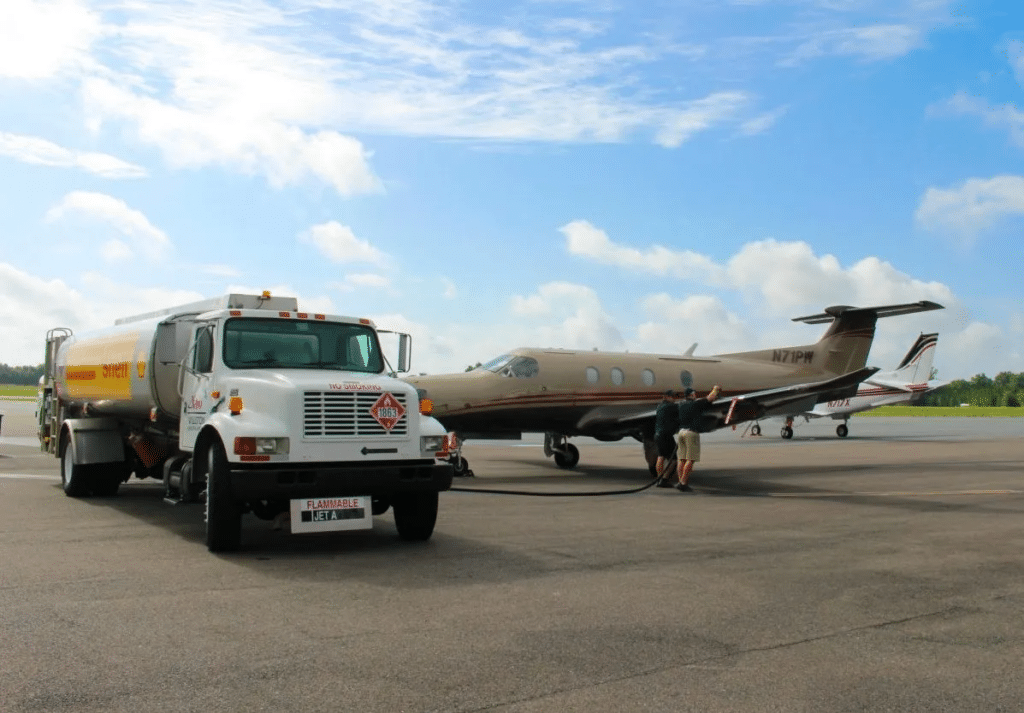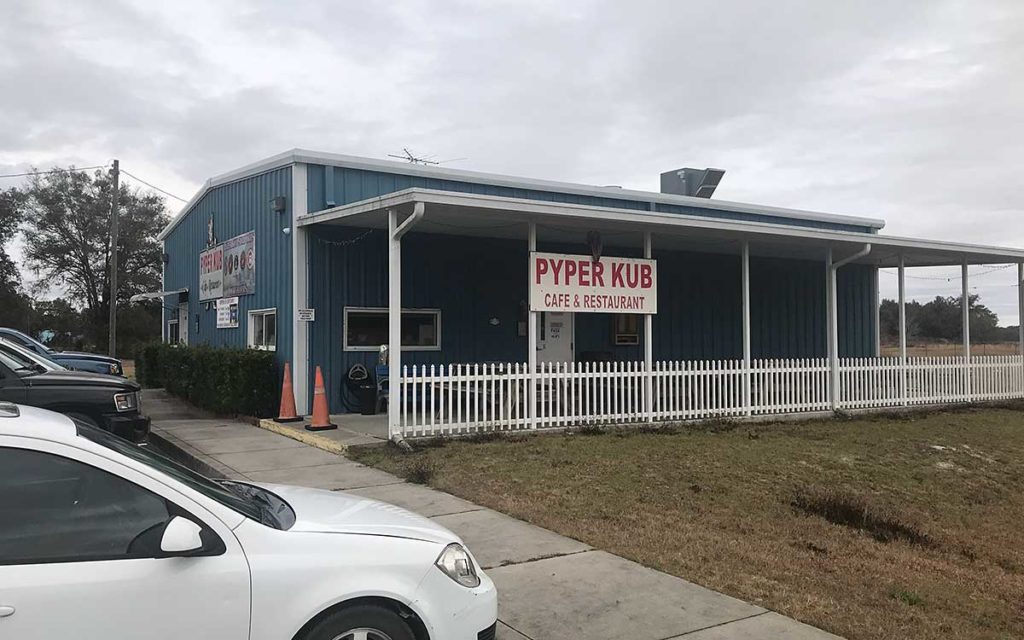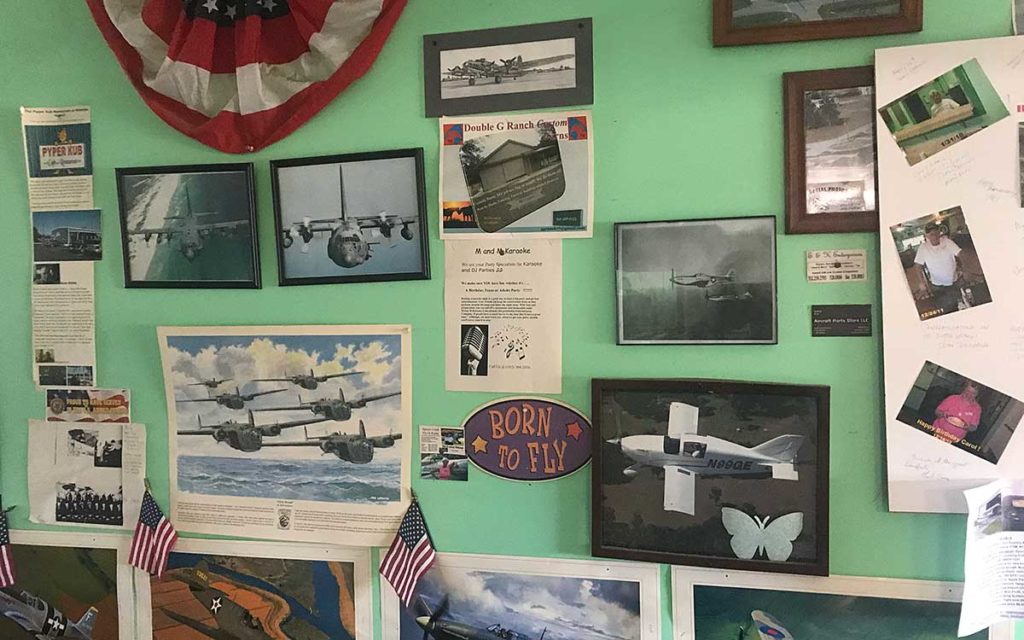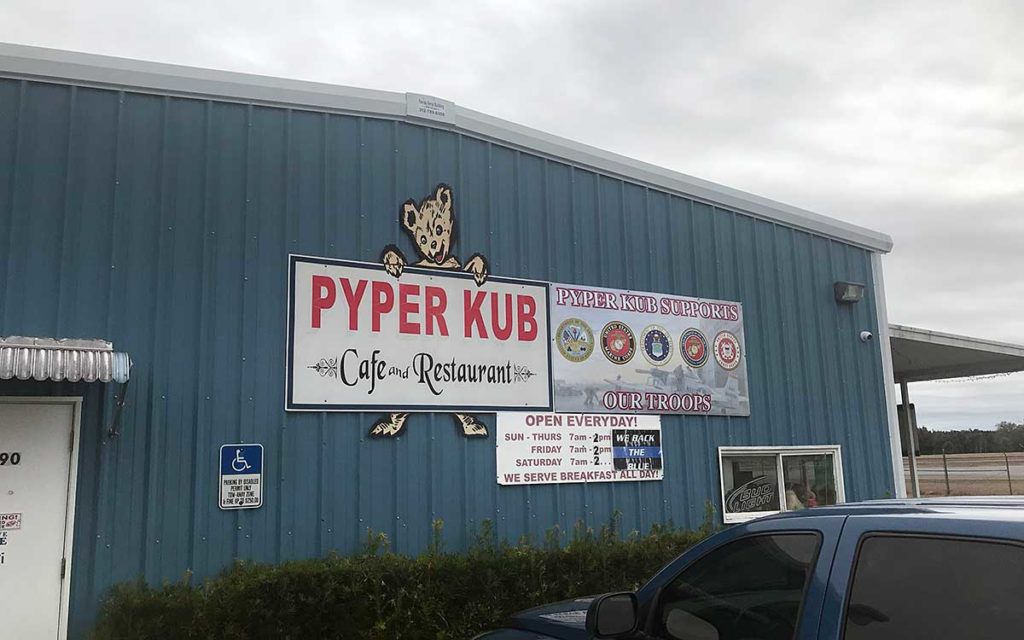Divers visiting Blue Grotto can take advantage of a unique opportunity. That is, they can enjoy a world-famous hundred-dollar hamburger for less than ten bucks. The story behind this is a fascinating blend of World War II and aviation history, along with local lore.
Airports everywhere
During World War II, the Army Air Corps faced a daunting task. They had only a limited time to train over a quarter-million aviation cadets as pilots, navigators, bombardiers and gunners. This required not only thousands of aircraft but also hundreds of brand-new airfields.
In due course, airfields began springing up all over the country. Among them was what was to become the Williston Municipal Airport. It was originally Montbrook Army Air Field. During World War II, the airfield was used primarily to train crews for the North American B-25 Mitchell Bomber.
The 10,000 B-25s produced during World War II served in nearly every theater of the war. They excelled in maritime patrol, ground attack, reconnaissance and more. Most famously, 16 Mitchell bombers were immortalized in the book and movie 30 Seconds Over Tokyo.
The Doolittle Raid
Most people reading this have never heard of the Doolittle Raid. But if your grandparents were alive during World War II, they have. Everyone was back then.
The Doolittle Raid was the brainchild of Colonel James Doolittle and associates from the Air Corps and Navy. It was designed to strike a devastating blow to Japanese morale while at the same time boosting the morale of a USA still reeling from the attack on Pearl Harbor.
Dolittle’s plan was unbelievably daring. The carrier USS Hornet would approach undetected to within a few hundred miles of the Japanese coast. Here its 16 Mitchell bombers would launch and proceed to targets in mainland Japan. They would then continue on to land in unoccupied China.
Of course, things seldom go according to plan. Fearing detection by a Japanese patrol boat, the bombers had to launch 170 miles earlier than planned. As a result, they would not have sufficient fuel to make it to their planned landing areas. This meant they would have to crash land or bail out when their planes ran out of fuel, most likely in Japanese-occupied territory.
You may have seen the Doolittle Raid depicted in the wildly inaccurate 2001 Ben Affleck film, Pearl Harbor. You can find a far more accurate telling of the story in the 1944 Spencer Tracy/Van Johnson film, 30 Seconds Over Tokyo (available on Amazon Prime).
Williston’s role in the raid
A B-25 Mitchell bomber usually needs a 4,700-foot runway to take off over a 50-foot obstacle. The deck of the Hornet would only afford them 467 feet. And yet, somehow, the crews of the 16 Doolittle Raid bombers managed to do it. Mastering this skill, however, took more than a year.
To this day, you can find a grid on the Williston Airport runway indicating the deck of the Hornet. It was one of the places crews based on Eglin Field would come to practice these incredibly short takeoffs.
The Doolittle Raid was not a huge success militarily. Its propaganda value, however, was immense. The Japs promised their emperor that no American bomb would ever fall on the Japanese mainland. Doolittle’s response was, “We’ll just have to see about that.” And they did.
Amazingly, nearly all the Doolittle Raiders managed to escape capture by the Japanese. When they returned to the USA, the survivors were awarded medals and promotions. Doolittle himself received the Congressional Medal of Honor. Think about them the next time you see the airport. They are part of our shared history.
Post-war decline and rebirth
Following the war, the Air Corp found itself with thousands of surplus planes and hundreds of surplus airfields. Most of these airfields were donated to local municipalities. Some became housing developments, warehouse districts and shopping malls. Many, however, became the local municipal airport. This is what became of the Williston facility.
For the next 50 years, not much happened with the airport. Many of the facilities had been neglected. There was no Jet A fuel, nor was the runway long enough to accommodate jets. There just wasn’t enough to interest visiting aviators.
Then, in the late 1990s, the city brought in Dave Libby to run things. Dave saw the airport’s potential. He reached out to the Florida Department of Transportation (FDOT) to see what sort of grant money might be available.
Dave’s contact at FDOT was, like him, a former Air Force air traffic controller. If you served in the military, you know what happens when two veterans with similar backgrounds get together.
Shortly, thereafter, FDOT provided the airport with $150,000 annually for upkeep and maintenance. More important, however, was the 15 million the FDOT provided for much-needed repairs and improvements. These included:
- A brand-new Fixed Base Operator (FBO) building with a pilot’s lounge, repair facility, flight school and car rentals.
- The construction of several hangars where local pilots could keep their planes.
- Lengthening and resurfacing the runways. This extended the main runway to over 6,000 feet, long enough for jets.
- Facilities for providing not only Avgas for piston planes but Jet A for turboprop and jet aircraft.
As they say, if you build it, they will come. This was certainly the case with Williston. The airport went from doing around $3,000 annually in landing fees and fuel sales to over a million dollars today. You will frequently see the apron lined with corporate jets and executive helicopters.
So, what’ a $100 hamburger?
If you fly, you know that pilots must regularly log hours and perfect their skills. A half-century ago, Flying magazine published an article entitled The Hundred-Dollar Hamburger. It described how many pilots would:
- Go to their local airport.
- Rent a Cessna 172 or similar aircraft.
- Fly to a neighboring airport.
- Have a burger.
- Fly home.
At the time, airplane rental, fuel, landing fees and, of course, the burger would set pilots back around $100. The article did not originate the term Hundred Dollar Hamburger, but it did popularize it.
After retiring from his job at the airport in the early 2000s, Dave decided that he would build a place where visiting pilots could get their hundred dollar mamburgers. The result was the Pyper Kub. Dave figured this would bring even more business to the airport. He was right.
The Pyper Kub today
The Pyper Kub is located right at the airport’s entrance. its menu is everything you’d expect from a mom-and-pop restaurant serving burgers, fries and sandwiches. (They also serve breakfast.) But it’s much more than that.
The walls are filled with photos of historic aircraft, warbird models and flags of every sort. It’s what you would expect from an establishment that celebrates Williston’s aviation history.
You may be surprised to pull up to the Pyper Kub to find the parking lot empty, but the restaurant itself filled with patrons. This is because as many as 90 percent of their customers come by air.
Despite this, the Pyper Kub welcomes divers and would like to see more of them. Blue Grotto office manager Susan Pagan once worked for Dave and his wife, Carol. (Hey, it’s a small town; we’re all family here.)
Burgers and fries may not be a regular part of your menu, but everyone we’ve ever taken to the Kub has come away with a smile on their face. And, yes, as a diver, that famous “hundred-dollar hamburger” (which, with inflation, is more like a “seven-hundred dollar hamburger”) can be yours for under ten bucks.
You have choices
You’ve no doubt noticed Williston has its share of popular fast-food eateries. We, however, prefer our locally owned establishments. These include (just to name a few):
- Green Shutters
- Shogun (Japanese)
- Ivey House
- Las Avina (Mexican)
There are also no less than three barbecue establishments. If you are a frequent visitor to the Grotto, you will want to try all these places.
We focused on the Pyper Kub in this article because of its history and the fact it doesn’t always show up on Google or GPS searches for Williston restaurants — even though it’s just six minutes from the Grotto.
The point is, it’s worth your time to discover that Williston is more than just Blue Grotto and Devil’s Den. Make it a point to get out and see why we love living here.


